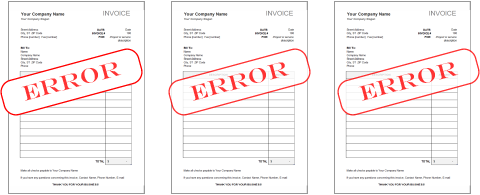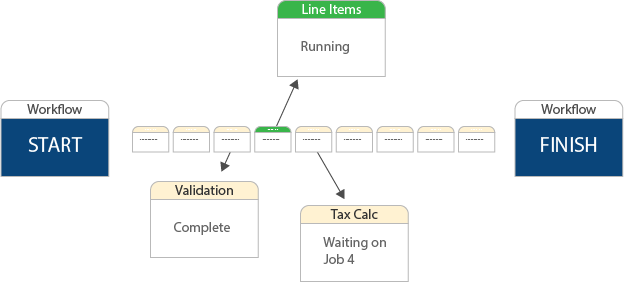Invoice Processing Automation
We often think of invoice processing as the responsibility of our accounting department and their ERP system. They should have this process locked up, right? But, IT teams can be deeply involved, especially when invoicing involves multiple platforms and systems. To generate invoices repeatedly and accurately requires a holistic view of every step of the process. Enterprise workload automation is your key to putting checks and balances on invoice processing.

Before We Even Start the Invoicing Workflow
Invoicing issues can start with all kinds of flawed input:
- Source files are never produced or never make it to the destination folder
- Source files contain a high percentage of errors
- Sparsely populated files
- Processes ended in an error state
These issues pose a major challenge when they originate from a large number of sources – e.g. transaction records from ALL your bank’s branches; usage data from ALL your service centers; rental data from ALL your properties. Before your ERP or accounting system starts its invoicing process, the source data needs to be available and accurate. Every incorrect invoice is a potential loss of revenue – an irate customer, a customer service call, or non-payment until it’s corrected.
Automation Opportunities
A centralized workload automation solution helps you manage exceptions, identify the right times to intervene, and compresses the average time it takes to produce the most accurate invoices possible.
1. Validating Source Files
If your business has 1,984 properties, and you’ve only received rental data for 1,982 properties, does it make sense to run your invoicing job? Maybe. Maybe not. Managing job steps through a workload automation solution enables you to perform this type of validation repeatedly, on a virtually unlimited number of source files. You may say that re-running 2 ad hoc invoices is a nominal cost; it’s okay. Or, you may say that you need an alert (email, phone) when this condition occurs, because anything less than 100% has a serious impact on your business. Whatever your standard, workload automation enforces it.

2. Evaluating Error Thresholds
Perfectly formed data can be elusive, and few enterprises can hold up invoicing for every little error. We can, however, systematically check that our inputs are below certain thresholds. By automating the checking of error logs, and quantifying the percentage of various error types, you can make better decisions about how you proceed through an invoicing workflow. Although your organization’s specific thresholds may vary, you’ll never be forced to hope that your source files are “good enough” to proceed.
3. Recovery
Issues flagged by the checks and balances above take time. (Although, dumping bad files into your invoicing process could result in even more time wasted.) A well-architected workflow closes up gaps significantly. Adding workflow steps, such as recovery jobs and retries, can often resolve minor nuisances (e.g. one late file), so that you can focus on systemic issues.